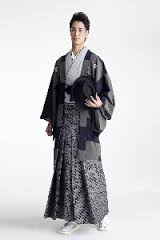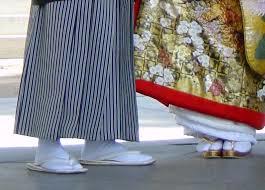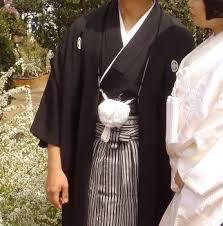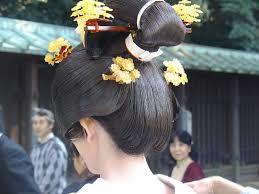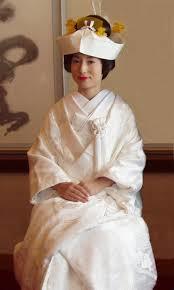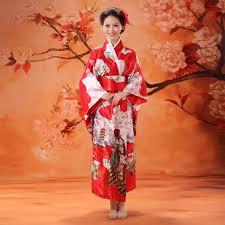Traditional Japanese wedding ceremonies are some of the most beautiful events in the country. The purpose of this research is to learn what a traditional Japanese Wedding ceremony entails and to explore its influences and roots in the perspective of the historical, cultural and social peculiarities of the Japanese society.
This involves the scale of culture, role of tradition, natural resources, traditions and dress code, and the religion and rituals. In addition, the research aims at explaining the origin of the wedding attires and their attributes for both the bride and groom. Other factors that will be discussed include the detailed description of courtship in Japan, and both the wedding and engagement customs. The paper is also focused at finding out the influence of Japanese traditional dress on other cultures.
Japanese Society
In the Japanese society, traditions and norms are strictly followed. The Japanese dressing code and traditions make this country differ from all other countries of the world (Heapy 37). The Japanese cultural and religious traditions play a key role during the wedding ceremonies. In Japan, the course of the wedding ceremony starting with the engagement is based on a fixed set of rules and customs. Each ritual has its importance and meaning to the society. The festivities are greatly influenced by social statuses of the brined and groom. Even in the modern days the power of old customs is very big. This is why the contemporary Japanese young people traditionally seek for the help of the third party to introduce them to each other.
It is interesting to observe how in one of the most highly developed and futuristic countries of the world the rules of the old times are respected and carefully followed. This happens because the meaning of reputation and honor is crucial for the Japanese men and women. This way sticking to the traditions is not viewed as an old-fashioned behavior, but as a noble and respectable practice. Some of the patterns of the traditional Japanese wedding are very symbolic, they are designed to demonstrate the strong connection with the past as in the Japanese society remembering the rules of the forefathers is very important.
Scale of Culture
For a long time Japanese culture had been based on patriarchal relationships between men and women. This is currently reflected in the rules and rituals of the Japanese weddings in a variety of ways. The ancient symbol of childbirth and fertility fill the engagement ceremony, the colors and patterns of the bridal attires demonstrate the woman’s transformation from a daughter, to a young lady, and then to a wife and a future mother. Cultural pressure also makes many women of Japan seek marriage in their early twenties. This is the influence of the past when being single for too long was considered as a bad luck. Even though this cultural pressure is strong, many contemporary Japanese women living in urban areas reject this tradition and prefer to stay single though their twenties up to thirties.
Role of Tradition
According to the tradition, of the Japanese society, when a man catches attention of a beautiful lady, he does not immediately approach her for a conversation. Instead, he must seek the help of a trusted friend to arrange a meeting (Gallagher 50). The ladys father is then visited for a permission for a hand in marriage. Using a third party to organize a wedding is a popular practice in Japan. If the father accepts the request, the two young people in love are introduced to each other at a mutual allys home. If the man and woman are interested in each other, they exchange gifts. The interchange creates a form of betrothal. The presents include money and clothing together with some symbolic gifts that are inexpensive, yet contain some deep meaning.
Natural Resources
Ever since the ancient times, Japan has been known for a number of natural resources that shaped the country’s traditions, lifestyle and influenced its rules and rituals. One of the best examples of such natural recourse is silk. Kimonos fashioned of silk and decorated with handmade embroidery have always been the symbol of social status in Japan, since this fabric is very fine and expensive. Since Japan is an island state, it has always been rich in all kinds of seafood. The most classic Japanese foods contain different types of fish. Dried cuttlefish is also a part of an engagement ritual in Japan, because of its phallic shape.
This fish symbolizes childbirth. One more well know natural resource popular in Japan is rice. It is present in a number of Japanese meals from soups to desserts. Besides, rice straw is one of the main composites of the rice paper, a traditional wrapping paper for the gifts given during the ceremonies of engagement and wedding in Japan. Finally, gemstones and treasures such as jade, coral, pearls, sapphire, opal are mined in Japan, this is why they may be traditionally present as parts of the wedding attires, jewelry and gifts during the ceremony.
Religion and Rituals
Religious beliefs are often incorporated in traditional ceremonies. Japanese wedding norms are categorized into two types (Norbury 77). They include traditional Shinto ceremonies and modern western weddings. The ceremony begins when the couple enters the banquet hall together. Shino wedding ceremonies are traditionally held in shrines. They involve the closest family members of the groom. Matrimony is believed to affect the entire clan. As a result, nakoudos are called upon to arrange a wedding between the spouses. Once the wedding is permitted, gifts are exchanged. In recent times, many Japanese people view the beliefs as outdated (Heapy 41). The match-making practice has become rare.
In the past, certain foods were believed to bring good luck. They included prawns and sea breams. The dishes were served in large quantities during the ceremony. In some instances, the guests went home with surplus food (Heapy 41).
Drinking sake is a religious practice that represents the ritual of purification; its aim is to establish ties with the gods (Dunn 360). According to the rules of the Shinto ceremony, a sake barrel needs to be broken open, this action is followed by the cutting of kagami-mochi. The practice is seen as a way of asking the gods to grant the couple good health and luck. The sharing is believed to indicate the bond between the bride and the groom. Due to such beliefs, kigami-biraki is growing more popular. It is no longer limited to wedding ceremonies only. Today, the Japanese people use it in house-warming parties and even company launching occasions. The bride is given some accessories to carry home after the wedding ceremony is over. The aim is to bring her good fortune in the new stage of life. They include a hakoseko and a kaiken.
History of the dress
Attire is a very important element during a traditional Japanese wedding. The official wedding dress for both the bride and groom is the kimono. The first kimonos originated from the traditional Han Chinese wear (Foster 31). However, the Chinese fashion was originally adopted in Japan in the 8th century. The Japanese started styling up their Kimonos during the Heian era. That was between 794 and 1192 AD. In Kamakura and the Muromachi era, both men and women dressed brightly colored kimonos.
Bridal Attire
The Japanese wedding dresses are unique. The bride’s preparations start with the painting of her face or sometimes her whole body white. The color indicates innocence, the lady demonstrates her purity to the gods this way. Her hair can be arranged in two styles, which are bunkin-takashmida and wataboshi. They were invented in the 14th century during the Muromachi era (Goldstein-Gidoni 41). It was the period in which women with high social status used to cover their hair whenever they were outdoors. The brides hair is made fancy using kanzashi, the traditional Japanese hair decorations made of flowers. Her head is wrapped in a white hood (Gallagher 52).
Her official wear comprises of a set of kimonos. The traditional white one is referred to as shiro-maku. The other is brocade kimono (Munsterberg 71). The latter is made of silk. The wedding garb originated in the Edo era between 1700 and 1900 century. A classic kimono called uchikake is worn during the reception (Munsterberg 71). Various ornaments and natural themes are used to decorate the bride’s garb. The official uchikake has a very specific shade. It is usually red because the color is linked to good fortune. The kimono has very long sleeves and is mostly worn as a coat on top of the shiro-maku. Due to its length, the bride’s attendants have to ensure it does not touch the ground. The bride does not wear the decorated kimono after her wedding (Tomita and Yazawa 59).
Such bright and colorful kimono is only put on by young and single women. In addition, she wears a moderately opened fan in her obi sash to symbolize joy. Appendix 4 illustrates the bride’s hairstyle, which is plaited in the Japanese traditional way. Appendix 5 shows a Japanese bride in a white kimono. The dress is referred to as Shiro-Maku. It also indicates the white hood used to cover her hair. In appendix 6 a traditional Japanese red uchikake is shown. It is often worn during the reception.
Groom’s Attire
The attire a Japanese groom wears is not as complex as the bridal one. During the wedding ceremony, the groom puts on a Monstsuki kimono. The attire consists of four pieces. They include an underkimono that is also referred to as nagajuban. It has some decorations at the back. The decorations include a solid black background that contains five family crests. In addition, the groom wears a black coat on top referred to as the haori. The linings of the haori are uniquely designed and they match his nagajuban (Musterberg 65).
The coat is not accompanied with a belt. Instead, it is tied alongside with the pom-pom tie. As for the foot wear, the groom puts on white tabi socks. The picture in appendix 1 is an illustration of a Japanese groom’s attire during a wedding ceremony. Appendix 2 shows the zori sandals typical Japanese foot wear for the ceremonies. In appendix 3, a picture of the pom-pom tie and the family’s crest name just below the shoulders is shown.
Courtship in Japan
The relationships between men and women in Japan are very different from those practiced in the Western society. Asian countries such as Japan have no Christian influences strictly limiting sexuality throughout their history, but this does not mean that people of Japan have no morals. The Japanese ladies are traditionally shy and prefer to have their partner or husband as a leader. Men are typically collected, stoic and organized, yet they are to demonstrated their feelings though romantic gestures. Couples wedded without rings and through a big ceremony that is nothing but a popular formality seem to have stronger bond than the lawfully registered couples of the West. Family fights are very rare in the Japanese courtship, unions are last longer and divorce rates are lower than in the West.
Engagement Ritual
The ceremony of engagement in Japan is the day then the families of the bride and groom officially meet for the first time to have a meal together and establish friendly relationships with each other. One of the most important parts of the engagement ceremony is the exchange of gifts that are related to the happiness of marriage. For example, one of the typical gifts is a folded fan, which contains many sections when opened, this object symbolized future wealth. Another typical gift is a long thread, which represents a gray hair meaning that the couple would spend the rest of their lives together.
Wedding Ritual
The style, rules and attributes of the wedding ceremony differ depending on the couple’s religion (Roney 77). The focus of this paper is the traditional Japanese wedding ceremony conducted according to Shinto style. This ceremony originates from the ancient times. According to the old Japanese beliefs, the first wedding ceremony ever happened when the son of the sun goddess Amaterasu Omikami married the daughter of another divine creature.
That occasion was celebrated with what is known as the feast of a hundred of dishes. All of the foods were delicacies such as seafood, rice, pounded cakes. Autumn and spring are the seasons most frequently chosen for the weddings in Japan. During these periods there are special days considered lucky for weddings, on these days dozens of couples are likely to assign their wedding ceremonies. Initially, the weddings in Japan were practiced in the night time, but during the Muromachi this rule has changed and now weddings are held during the day.
Even though every modern hotel in Japan has a room designed only for wedding ceremonies, the main ritual of the traditional Japanese wedding has to happen at a Shinto shrine. This is a rather intimate ritual, which has a limited circle of attendants and participants. Only the close family members of the bride and groom are to be present at the ceremony in the Shinto shrine. The other people that take part in the ceremony are the Miko maidens and the go-betweens also known as Nakodo.
Go-between practice comes from the ancient times when women used to have much weaker social roles than men and arranged marriages were practiced. Nakodo were normally selected from the older couples, their responsible functions were to select a man and a woman suitable for each other and bring them together. In earlier times the groom and bride had no right to change the decision of their family members and nakodo. Today, nakodo are more of a formality. The presence of a nakodo signifies that the newlyweds will have an unwavering marriage (Norbury 82).
At the gathering in a Shinto shrine, traditional Japanese music has to play. For that a special band can be invited. The music is rather monotonous and slow, the instruments used are mostly flutes. During the ceremony the bride is dressed in her first kimono, which is called Shiromuku, it is the white kimono. The bride’s head is hidden under the special hood, which serves to cover her “horns of jealousy” demonstrating that she is obliged to be humble as a wife.
The priest that conducts the traditional wedding ceremony is to purify the room and all the people present in it. For this action the priest uses special tools that are made of plain white pieces of paper on the sticks, these attributes are called harai-gushi during the ceremony the priest waves harai-gushi several times.
The ritual called san-san-kudo is a very important part of the traditional Japanese Shinto style wedding. San-san-kudo is literally translated as three-three-nine times. This ritual is called this way because it involves three series of sake drinking by the bride and the groom. Sake is the traditional drink for the Japanese weddings, it is served by the Miko maidens. In Japanese tradition, a Miko is a female priest assistant. Sake has a unique cultural meaning in Japan. Generally, it is a practice carried out to seal a marriage. It began in the 8th century during the Samurai era. Sake used to be drunk during the Shinto ceremonies.
The locals consider it as an age-old wedding practice. In local language, the practice is referred to as Kagami-Biraki. Kagami is the lid of the Sake barrel. On its part, ‘Biraki’ means to open. The ceremony begins with breaking the lid of the barrel open (Baldizzone and Baldizzone 54). That is done using a wooden mallet. The Kagami is round. As a result, it is considered as an emblem of harmony and good luck. This ritual has several details. First of all, the maidens are to be dressed in red and white kimonos. The colors represent purity, holiness and good luck. The cups used for the sake drinking part are also special.
They are all of different sizes and have to be bright red. The bride and groom traditionally exchange the cups and share the drinks. This ritual has a crucial meaning because sake drinking in Japan represents what in the weddings of Western countries is symbolized by the rings and vows. Basically, sake drinking ritual is what is supposed to bind the young couple and turn them into a family that cannot be divided. This sake drinking tradition may seem strange for a western observer because Western people are used to the belief that more material attributes need to be employed to seal the marriage and make people truly loyal and devoted to each other for years.
After the private wedding ritual held in a Shinto shrine is over, there is a reception ceremony that happens in a bigger room and includes much more guests invited for the celebration of a new wedding.
Japanese wedding ceremonies are very expensive affairs. In most cases, the bride wears different dresses. The cakes, champagne fountains, and dry ice smoke machines are usually six foot high. In addition, dinners for each guest costs around $300. The wedding industry in Japan is worth over $20 billion (Norbury 56). In some cases, the budget for the event may be more than $100,000. Any wedding that costs about $10,000 to $20,000 is regarded as cheap (Norbury 58). A number of families are faced with debts after holding a wedding.
Dresses of Family and Friends
The family members and the guests have their own unique wear too. The couple’s mothers and fathers put on black kimonos referred to as tomesode for the event (Dunn 352). Generally, the Japanese traditional wedding dress has greatly influenced fashion in many parts of the world. Its popularity is so big because the outfit is rather stylish and unique.
Color Preferences
The aspect of color is strictly observed in Japan. Colors have precise and defined meanings. The lady often wears red for the customary wedding events. The color is associated with happiness, joy, and celebration (Norbury 79). It is believed to bring good fortune and long life. The strings used to wrap shugi-bukuro are red and white in color. Orange is also a preferred choice. The reason is because it symbolizes courage and love. The most preferred colors for the groom attire are black and white. Blue and white are also used regularly.
They are normally used in fabrics and culinary. As a result of this, they feature prominently in the traditional weddings. For example, summer kimonos are made using these two colors. Ceremonial kimonos are very expensive. As a result, only geisha practice the custom of changing color each month (Gallagher 92). Every month is represented by a unique natural orientation. For example, January is represented by pine. On its part, February is red-blossom plum, while March is peach. On the other hand, April is cherry.
Influence of Other Cultures
Today, many Japanese weddings are held according to Western style. They may contain such attributes are bride’s maids, less classic Japanese wedding attires. A man may wear a suit instead of a kimono. Some Japanese couples would even add wedding rings as the symbols of their connection, which is never present in the traditional Japanese weddings. Women may refuse to change the dresses during the ceremony, sticking to just one dress, which is either red or white.
Conclusion
A marriage has various perspectives. Japanese traditional wedding ceremonies represent various themes about marriage. Some of the common themes include marriage as a new stage of life. Others are indications of the fact that the new stage is jointly created by the bride and the groom. Another theme indicates the ups and downs associated with marriages (Tomita and Yazawa 60). A successful marriage requires a combined effort to work. It is also a union of harmonizing parts. It is a lasting union supported by love and trust. The major theme is that the wedding signifies a new beginning for the newlyweds.
The wedding symbolizes a transformation of both the man and the woman. Bride dies as a daughter and becomes reborn as a wife and a future mother. The groom gains new responsibilities, becomes in charge of his new family. The Japanese consider the building of a new home as a historical shift. In traditional societies, marriage was viewed as an extension of the lives of the man and his family (Schomp 32). Wedding unions in Japan are respected and considered sacred and are preserved carefully, this feature, is probably, what makes the Japanese marriage and courtship so much more stable and strong that the one of the West.
Works Cited
Baldizzone, Tiziana, and Gianni Baldizzone. Wedding Ceremonies: Ethnic Symbols, Costume, and Rituals, Paris: Flammarion, 2001. Print.
Dunn, Cynthia. “Cultural Models and Metaphors for Marriage: An Analysis of Discourse at Japanese Wedding Receptions.” Ethos 32.3 (2004): 348-373. Print.
Foster, Helen. Wedding Dress across Cultures, Oxford: Berg, 2003. Print.
Gallagher, John. Geisha: A Unique World of Tradition, Elegance, and Art, London: PRC Publishers, 2003. Print.
Goldstein-Gidoni, Ofra. “The Production Of Tradition And Culture In The Japanese Wedding Enterprise.” Ethnos 65.1 (2000): 33-55. Print.
Heapy, Teresa. Japanese Culture, Chicago, Ill.: Heinemann Library, 2013. Print.
Mente, Boye. Etiquette Guide to Japan: Know the Rules That Make the Difference, North Clarendon, Vt.: Tuttle Publishers, 2009. Print.
Munsterberg, Hugo. The Japanese Kimono, Hong Kong: Oxford University Press, 1996. Print.
Norbury, Paul. Japan, London: Kuperard, 2011. Print.
Roney, Carley. The Knot Guide to Wedding Vows and Traditions: Readings, Rituals, Music, Dances, and Toasts, New York: Clarkson Potter, 2013. Print.
Schomp, Virginia. Japan in the Days of the Samurai, New York: Benchmark, 2002. Print.
Tomita, Sukehiro, and Nao Yazawa. Wedding Peach, San Francisco, CA: VIZ, 2003. Print.
Appendix
